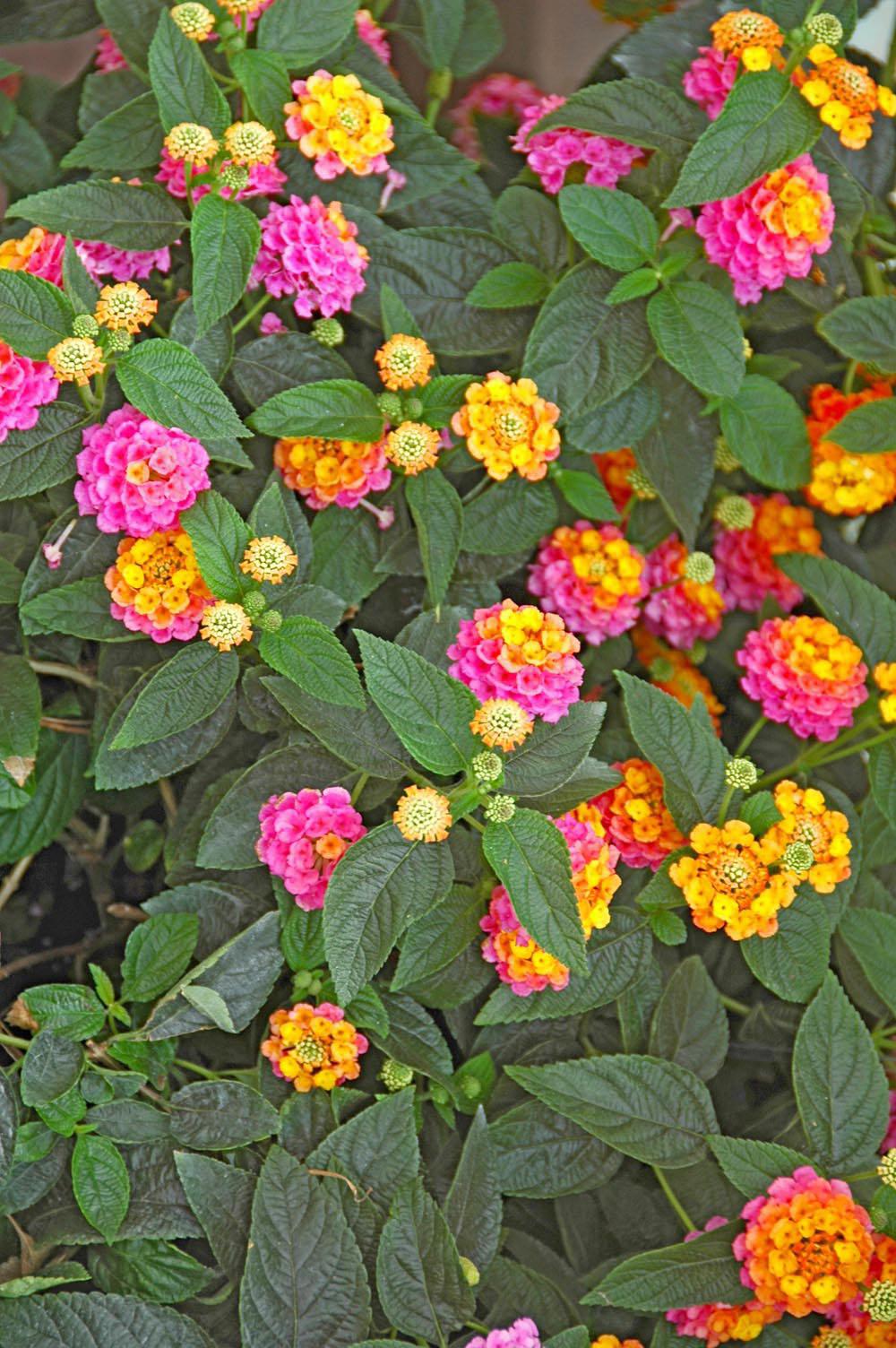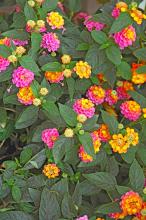Information Possibly Outdated
The information presented on this page was originally released on May 10, 2007. It may not be outdated, but please search our site for more current information. If you plan to quote or reference this information in a publication, please check with the Extension specialist or author before proceeding.
Lantanas are tops for color all summer
By Norman Winter
MSU Horticulturist
Central Mississippi Research & Extension Center
The lantana is probably the plant you're looking for if you want a flower that gives vibrant color from late spring though frost. Lantanas, which are native to tropical America, are related to verbenas and have the common name shrub verbena.
It is a little surprising to see so many gardeners still passionately in love with the New Gold variety after all these years. More than a decade ago, it swept awards in just about every state that had a promotion program. It was the first Mississippi Medallion winner in 1996.
The bright gold colors stand out and are the perfect complement to scores of violet-blue flowers. What made the New Gold so good was that it rarely produced the little, round fruit that seems to shut down flower production in the older varieties.
The same can be said of the second Mississippi Medallion-winning lantana called Sonset. You can still find this one today, too, as it went national with a company called Grolink.
Today's newer varieties are selected for the same nonstop blooming and even more vibrant colors. Garden centers now may offer the Lucky, Landmark, Bandana or Piñata series that has colors to rival Carnival in Rio.
If you have ever watched a lantana for a period of time, then you are aware that each little floret of the flower cluster changes colors during the day. If you were able to remember which floret you were looking at and went back three hours later, you would already start to see a change. This trait only holds true for the lantanas with multiple colors.
Besides their ability to withstand torrid heat and a wide variety of soil conditions, the lantana is a real favorite of both butterflies and hummingbirds. It's not uncommon to go to a garden center that has several lantanas and get the feeling that you are on the set of a National Geographic photography shoot.
Lantanas perform well in Mississippi, and many gardeners find them to be perennial. Two of the keys here are good winter drainage and mulch. I have watched gardeners in zone 7 simply cover theirs with a good layer of pine straw and see them return every year.
Remember that sunlight is a key ingredient for the best blooming to occur. After working 3 to 4 inches of organic matter into the bed, space lantanas about 2 to 4 feet apart, depending on the variety.
Throughout the season, don't be afraid to prune a little to maintain size and to stimulate new growth and more blooms. Fertilizing is no big deal with lantanas, but they do respond to a light application as a little pick-me-up in midsummer.
For butterfly and hummingbird lovers, choose companion plants for lantanas like the blue anise sage, butterfly bush, butterfly weed and even pentas.
Spring may have warmed up a little sooner than we like, and there still are plenty of pansies that need to be pulled up. The lantana would make a nice replacement for months of heat-loving color.



